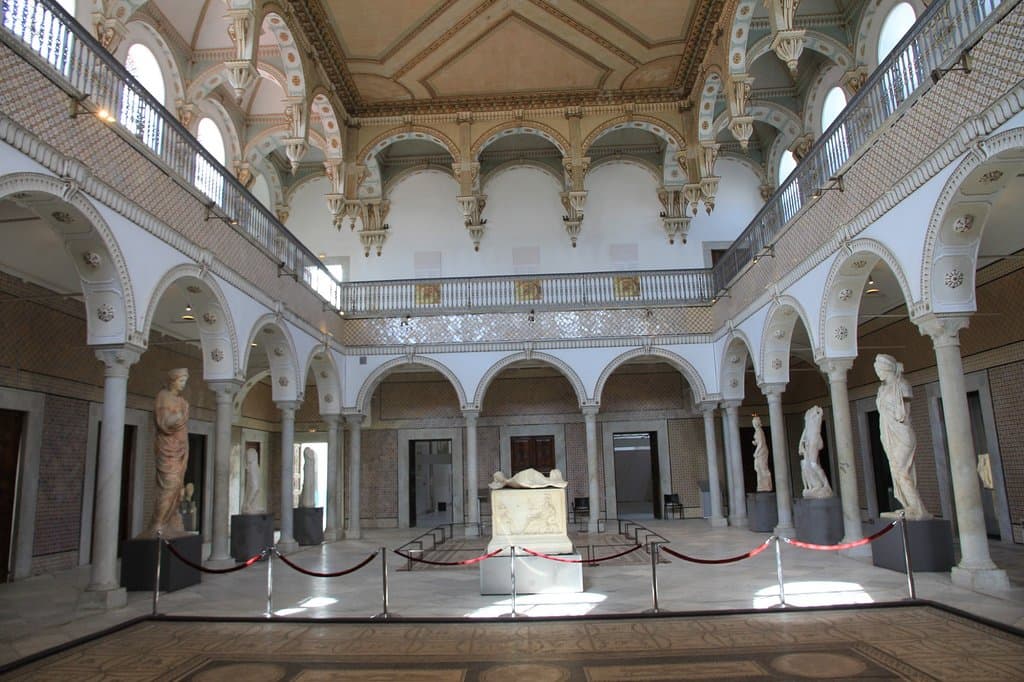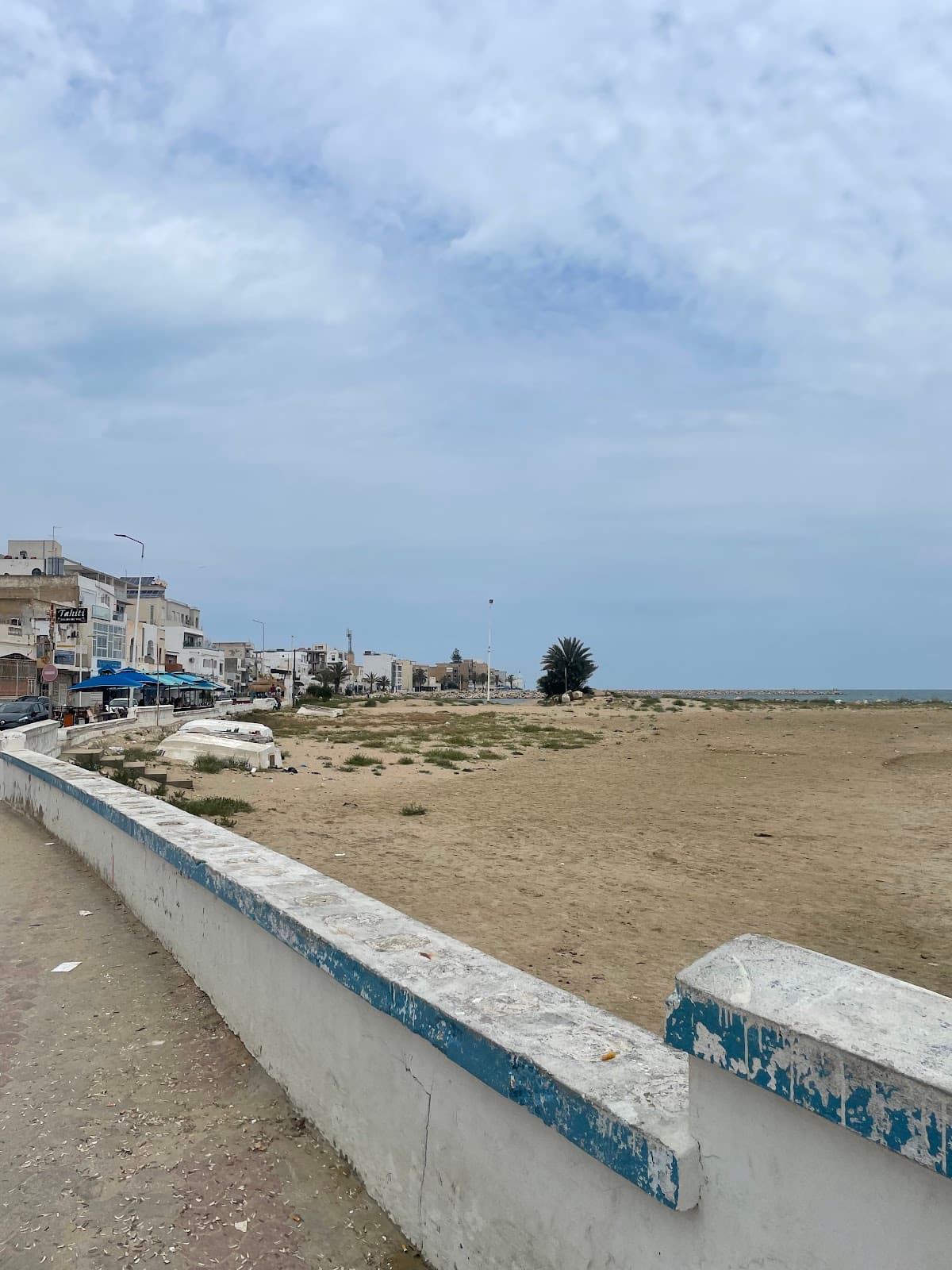
Bardo National Museum
Home to the world's largest collection of Roman mosaics and vast artifacts from Carthage, offering a deep dive into Tunisian history.

Highlights
Must-see attractions

Social
From TikTok & Reddit
Best Time
Avoid midday heat & crowds

Bardo National Museum
Best Time
Avoid midday heat & crowds

Highlights
Must-see attractions
Home to the world's largest collection of Roman mosaics and vast artifacts from Carthage, offering a deep dive into Tunisian history.
"One of the best museums I have ever visited, the mosaic collection is so impressive."

💧 Stay Hydrated!
The museum can get hot, especially without AC. Bring plenty of water and a fan.
🚶♂️ Consider a Guide
For a deeper understanding, especially on your first visit, a local guide can provide valuable context.

Highlights
Discover the most iconic attractions and experiences

World's Largest Roman Mosaic Collection
Mosaic Halls
Marvel at an unparalleled display of vibrant, intricate Roman mosaics, showcasing daily life and mythology.
Carthaginian Artifacts
Carthage Collection
Explore ancient relics from the Phoenician and Roman periods of Carthage, offering a glimpse into a powerful civilization.

Islamic Art and Artifacts
Islamic Art Galleries
Discover exquisite Islamic art, calligraphy, and decorative objects that highlight Tunisia's rich cultural heritage.
Plans like a pro.
Thinks like you
Planning Your Visit
Beat the Heat & Crowds
Navigating the Collections
Best Times
Insider Tips
from TikTok, Instagram & Reddit
💧 Stay Hydrated!
The museum can get hot, especially without AC. Bring plenty of water and a fan.
🚶♂️ Consider a Guide
For a deeper understanding, especially on your first visit, a local guide can provide valuable context.
🛄 Bag Check
Larger bags and rucksacks must be left at reception. Plan accordingly.
👟 Protect the Mosaics
Visitors are advised to be mindful of walking on or near the ground mosaics.
Tips
from all over the internet
💧 Stay Hydrated!
The museum can get hot, especially without AC. Bring plenty of water and a fan.
🚶♂️ Consider a Guide
For a deeper understanding, especially on your first visit, a local guide can provide valuable context.
🛄 Bag Check
Larger bags and rucksacks must be left at reception. Plan accordingly.
👟 Protect the Mosaics
Visitors are advised to be mindful of walking on or near the ground mosaics.
⏱️ Allow 2-3 Hours
To fully appreciate the collections, allocate a couple of hours for your visit.
What Travellers Say
Reviews Summary
The Bardo National Museum is widely praised as Tunisia's premier museum, particularly for its breathtaking collection of Roman mosaics and historical artifacts. Visitors consistently highlight the quality and scale of the exhibits, though some note the lack of air conditioning and the need for better crowd management around delicate ground mosaics. Despite minor drawbacks, it's considered a top attraction offering immense historical and artistic value.
"Bardo is the biggest and most important museum in Tunisia. It features the points about the history of Tunisia, focusing on the Roman times and the transition to an Islamic state. There is nothing about the contemporary history of the country. There are a lot of chambers and you get the information in Arabic, French and English. A couple of hours is enough to explore the building."
Reza Sattarzadeh Nowbari
"One of the best museums I have ever visited. The mosaic collection is so impressive and the rooms were designed very thoughtfully. We spent around 2h exploring and I didn't feel the time passing."
Kari M
"The day we went the museum was too hot. There was no AC, so bring ice water and a mechanical or hand fan.
Local friends recommended to get a guide. We forgot and just strolled.
Museum was larger than expected. There's no overview signage or organization about the sections - just info.
Thankfully, the descriptors are in 3 languages - Arabic, English, and French."
Dr.T G
What People Like
What People Dislike
Frequently Asked Questions
🚇 🗺️ Getting There
The Bardo National Museum (museum of Bardo) is accessible by taxi or public transport from central Tunis. Many visitors opt for a taxi for convenience. If using public transport, research the most direct bus or tram routes to the museum's vicinity.
Yes, there is a large car park available on-site at the Bardo National Museum, making it convenient for those arriving by car.
Information on specific accessibility features for wheelchairs is not widely detailed, but the museum is housed in a palatial building. It's advisable to contact the museum directly for the most up-to-date accessibility information.
From the Tunis Medina, taking a taxi is often the quickest and most straightforward option to reach the Bardo National Museum. Alternatively, you can explore local bus routes, but this may involve transfers.
Ride-sharing services may be available in Tunis, but their availability and reliability can vary. Taxis are a widely used and reliable option for reaching the museum.
🎫 🎫 Tickets & Entry
The entry price for the Bardo National Museum is generally considered affordable. Specific prices can vary, so it's best to check the official website or inquire upon arrival.
Tickets for the Bardo National Museum can be purchased at the ticket counter once you are inside the main entrance and have passed the initial security check.
Opening hours for the museum bardo Tunis can vary seasonally. It's recommended to check the official museum website or local listings for the most current operating times before your visit.
Advance booking for tickets to the Bardo National Museum is generally not required, especially for individual visitors. You can typically purchase tickets upon arrival.
Discounts may be available for students, seniors, or specific groups. It's advisable to inquire at the ticket counter or check the museum's official information for any applicable discount policies.
🎫 🧭 Onsite Experience
The museum is larger than it might appear. Visitors often recommend taking your time to explore the numerous chambers. While descriptors are in three languages, a guide can offer deeper insights.
Most visitors find that 2-3 hours is sufficient to explore the Bardo National Museum and appreciate its extensive collections, particularly the mosaics.
While not always explicitly advertised, local guides are often available for hire at or near the museum. Local friends have recommended getting a guide to enhance the experience.
Exhibit descriptions at the Bardo National Museum are provided in Arabic, English, and French, making the information accessible to a wide range of visitors.
Photography policies can vary. Generally, non-flash photography for personal use is often permitted, but it's best to check for any specific restrictions or signage within the museum.
🍽️ 🍽️ Food & Dining
There are no extensive dining facilities mentioned within the Bardo National Museum itself. It's advisable to plan for meals before or after your visit at nearby establishments in Tunis.
While not explicitly stated, it's generally recommended to consume food and drinks outside of exhibition halls in museums to protect the artifacts. Bringing water is often permitted, especially given the potential heat.
The area around the Bardo National Museum may have local eateries. For a wider selection of dining options, consider returning to the city center of Tunis or exploring popular neighborhoods.
📸 📸 Photography
The Roman mosaics are undoubtedly the most photogenic elements, with their vibrant colors and intricate details. The palatial architecture of the museum itself also offers beautiful photographic backdrops.
Flash photography is typically not allowed in museums to protect delicate artifacts from light damage. Always look for signage or ask staff if unsure.
Visiting during the morning or late afternoon can provide softer, more natural light, which is ideal for photography. Avoid harsh midday sun if possible.
The main mosaic halls, especially those featuring large, well-preserved scenes, are prime spots. The courtyards and grand halls of the former palace also make for stunning shots.
Tripod usage policies can vary greatly. It's best to assume they are not allowed unless explicitly stated otherwise, as they can obstruct pathways and other visitors.
For Different Travelers
Tailored advice for your travel style
👨👩👧 Families with Kids
Consider focusing on the most visually striking mosaics and artifacts that might capture a child's attention. While a full historical deep-dive might be too much, pointing out interesting figures or stories within the mosaics can make the visit more interactive. The sheer scale of some exhibits can also be impressive for younger visitors.
🏛️ History Buffs & Art Enthusiasts
To truly maximize your experience, consider hiring a local guide who can provide expert commentary and historical context that goes beyond the exhibit labels. This will allow you to appreciate the nuances of the artifacts and understand their significance within broader historical narratives.
Deep Dives
In-depth insights and expert knowledge
The Marvel of Roman Mosaics
One common observation from visitors is the desire to protect these delicate treasures. There's a recurring suggestion that areas with ground mosaics should be better cordoned off to prevent damage from foot traffic, even though visitors can still admire them. This highlights the immense value placed on these artifacts and the ongoing challenge of balancing public access with preservation.
When exploring the mosaic halls, take your time to appreciate the craftsmanship. Look for the subtle details, the different tesserae used, and the stories they tell. The museum's thoughtful layout allows for excellent viewing angles, making it a truly immersive experience for anyone interested in Roman history and art.
Navigating Your Visit: Tips from Travelers
For those seeking a deeper understanding of the exhibits, particularly on a first visit, engaging a local guide is a popular suggestion. While the museum provides information in Arabic, English, and French, a guide can offer historical context, highlight key pieces, and help organize your exploration of the vast collections. This can transform a casual stroll into an educational journey.
Practicalities like bag storage are also important. The museum requires visitors to leave larger bags and rucksacks at reception, so be prepared for this and factor it into your arrival time. Finally, while the museum is a treasure trove, some visitors have pointed out a lack of overarching signage indicating section organization, making a guide or a pre-trip plan even more beneficial for navigating the extensive displays.






Social
from TikTok, Instagram & Reddit